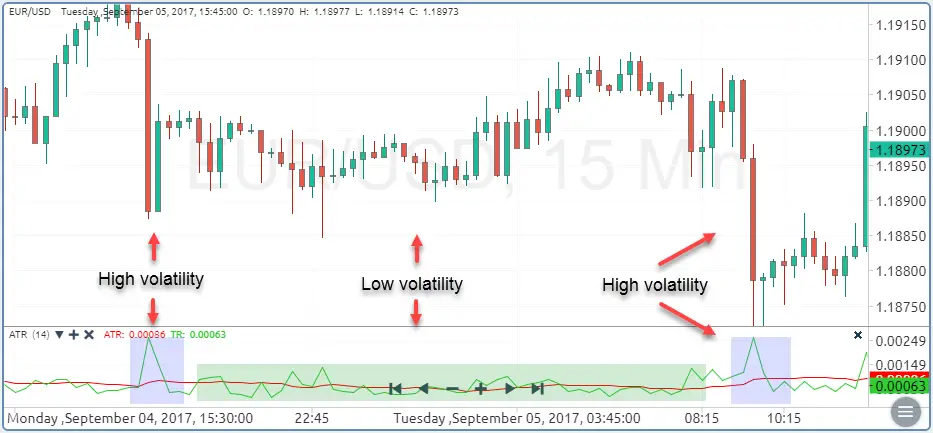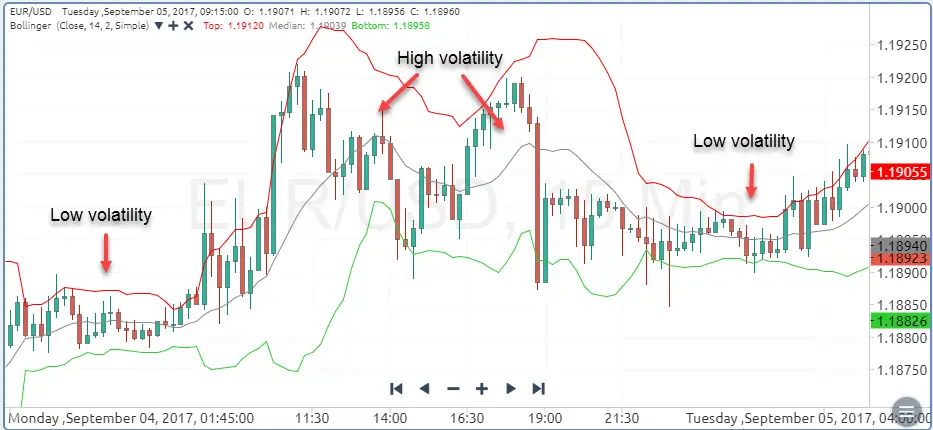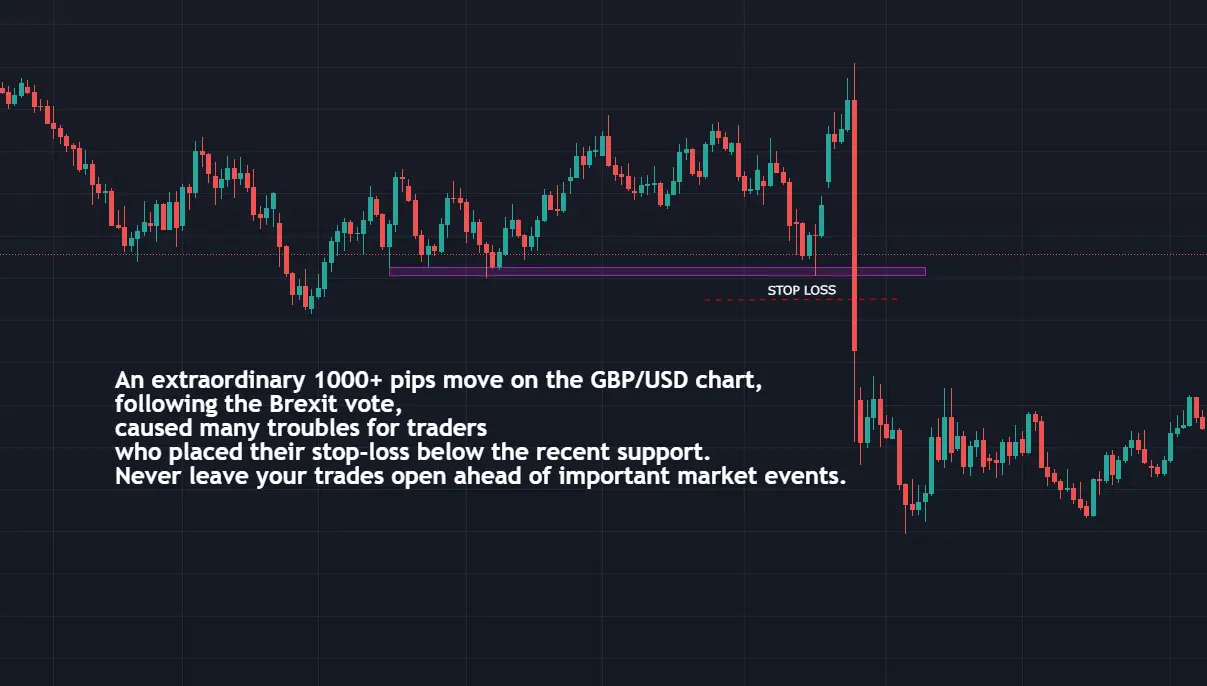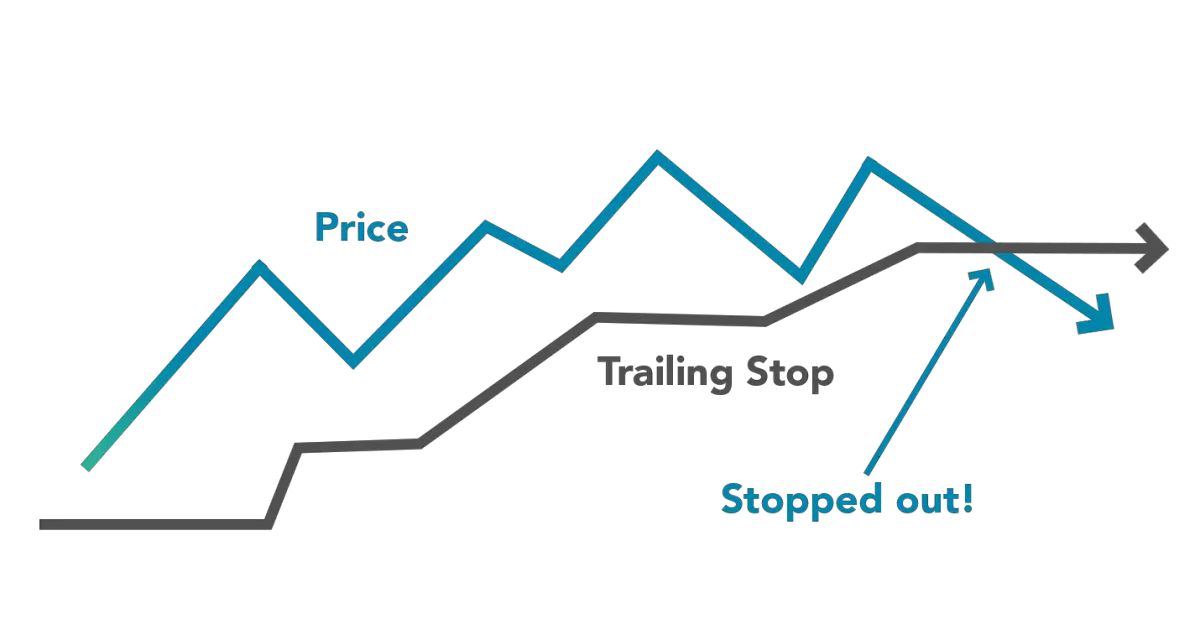If there is one thing that is absolutely necessary for becoming a consistently profitable trader, that would be controlling your risk. And what tool serves better that purpose than stop-loss orders.
Many traders place their stop-losses at unreasonable levels, where the market repeatedly stops them out of their trades. Here are the Best Strategies to avoid unreasonable stops and grow your trading capital.
Main Types of Stops
Before we dig deeper into strategies to avoid unreasonable stop-losses, it’s a good idea to understand the different types of stop-loss used in trading. Here are the main types of stop:
- Price-action stops
Arguably the most efficient type of stop-losses are stops based on price-action. This is the type of stops most traders should use in their daily trading, except if they’re using some very specific strategies that call for one of the other types of stops.
So, what are price-action stops? Price-action stops are based on the price-action and important technical levels of a financial instrument. A price-action stop can be using technical concepts such as support and resistance, Fibonacci levels, and trendlines to find suitable price levels for placing stops.
Many new traders pay too much attention to finding the perfect entry point for their trades, often completely neglecting exit points (take profits and stop losses). They would place their stops randomly around round numbers (e.g. 1.10, 1.20…) or inside price-ranges where the stop has a large risk of being reached by the price.
Good technical levels to use for stop-losses are levels below supports and above resistances, above and below channels and trendline, a few pips away from round-number levels (because the price tends to respect round numbers), and above/below important Fibonacci levels, such as the 38.2% or 61.8% levels.
- Percentage stops
Another popular type of stop-losses is percentage stops. As their name suggests, percentage stops are based on a percentage of a trader’s account size to determine a potential level for placing the stop-loss. The problem with this approach is that traders tend to use a constant position size when using percentage stops.
For example, a trader may always trade with a position size of 1 lot, and use the percentage approach to determine how wide his stop-loss should be. With a $10,000 account and a 2% percentage stop, the stop-loss would be placed around 20 pips away from the current price (2% x $10,000 = $200, and 1 pip with a 1 lot position = cca $10). This approach doesn’t take into account important technical levels on the chart, but only the stop-loss size that equals the percentage a trader wants to risk.
Again, traders should place their stop-losses based on technical levels and not on percentages. You may have heard that you should never risk more than 2-3% of your trading account on any single trade, so why shouldn’t you use percentage stops then? The answer is simple: We need to adjust our position size to risk 2-3% of our account and not our stop-loss size!
- Volatility stops
Volatility stops are based on the current market volatility of the financial instrument you want to trade. Volatility refers to the rate of price change during a specific period of time: The more the price moves within a short timeframe, the higher is the volatility of the market.
Volatility stops try to take advantage of this concept by placing stops outside the range of recent volatility. For example, if the EURUSD pair moved 20 pips during the last hour, a short-term trader could place a stop-loss that is at least 20 pips away from the current price.
Volatility stops work great when combined with price-action stops. Traders who want to use volatility stops in their trading should take a look at the ATR, or Average True Range, indicator. The ATR indicator takes the ranges of a pre-determined number of previous candles and calculates the average value for the high-low ranges. The higher the average value, the more volatile the market is. As a simple rule of thumb, a trader could place his stop-loss around 2 times the value of the ATR indicator (2x ATR).
- Time stops
Last but not least, time stops are based on the time a trade is held active. A short-term trader could use time stops to close his open trade if there is no action after the trade has been open for a few hours.
Day traders often use time stops to close their active trades by the end of the trading day, while swing traders who don’t want to hold to their trades over the weekend may close their trades on Friday. Those are all examples of time stops that can be easily incorporated into your trading strategy and combined with volatility stops and price-action stops.
What is the Best Place for Stops?
As mentioned earlier, the best place for placing a stop-loss is to analyze the market from a technical standpoint and to identify important technical levels. Daily highs and lows and other horizontal support and resistance levels, as well as channels and trendlines, are a great way to place your stop-loss orders.
In addition, measuring the volatility of the market with the help of the ATR indicator and avoiding round numbers should further help with preventing unreasonable stops.
While all these factors have to be taken into account when placing stops, the best places are arguably horizontal support and resistance levels. Make sure you identify them correctly by looking for daily highs and lows and analyzing multiple timeframes before placing your trades. In the following lines, we’ll cover some effective strategies to help you place your stop-losses at the best possible levels.
Best Strategies to Avoid Unreasonable Stops
Here are some strategies every trader should use when placing stop-losses.
- 1. Follow the price-action
The most effective tip you can follow is to place your stops above or below important technical levels. If you’re buying, you should place your stop-loss a few pips below an important technical level, such as a horizontal support area, a rising trendline, a rising channel, or a bullish chart pattern.
Similarly, if you’re selling, you should place your stop-loss a few pips above an important technical level, such as horizontal resistance area, falling trendlines and channels, and bearish chart patterns.
The price tends to respect previous support and resistance levels as traders use those levels to base their trading decisions on. Those levels often hold a significant number of buy or sell orders, which get triggered when the price reaches that level and cause strong buying or selling pressure that moves the price away from those levels.
As your trade starts to move in your favor, you can also use previous support and resistance levels to move your stop-loss in your favor and lock in some profits, while simultaneously open additional positions in the markets. This is called scaling-in and is a very powerful tool for profitable trading.
- 2. Using ATRs
The Average True Range (ATR) is a technical indicator that measures volatility. The indicator also takes gaps into account, which is important for an accurate representation of the underlying volatility in the markets. The ATR indicator takes, by default, the previous 14-period high-low ranges and calculates an average for the prices, which is then displayed as a line on the chart.
The True Range is the greatest of the following calculations: today’s high minus today’s low, today’s high minus yesterday’s close (absolute value), and today’s low minus yesterday’s close (absolute value.) The average of the True Ranges forms the ATR indicator.

So, why is the ATR indicator so important for us? Because it can be effectively used for placing stops based on volatility. The higher the ATR value, the higher the volatility in the underlying market, and the wider should be our stop-loss. The opposite is true when the ATR value is low, as this signals low volatility and the possibility to place tight stop-losses.
Many traders combine the ATR indicator with price-action. For example, if you want to buy the EURUSD pair with a support level identified 15 pips below the current price, but the ATR shows that the 14-period average is 25 pips, you should look to place your stop-loss at least 25 pips away from the current price. A better option would be to go with 2x ATR, which leaves you with plenty of maneuvering room for unexpected price-changes.
- 3. Identifying volatility with Bollinger bands
An alternative way to identify volatility in the markets is to use Bollinger bands. Bollinger bands are a volatility indicator that consists of three lines: one moving average in the center, and two bands that are drawn above and below the moving average.
The standard distance of the bands from the moving average is 2 standard deviations, which means that the bands widen when volatility rises, and tighten when volatility falls. Placing your stop-loss outside of the Bollinger bands can be an alternative way to ATR for placing volatility stops.

- 4. Close your trades ahead of important market events
Another important point to avoid unreasonable stops is to close your trades ahead of important market reports, after the close of the trading day (if you’re a day trader), and ahead of the weekend (if you’re a swing trader.) Market reports can create unexpected price movements in the markets you’re trading, which increases the risk that you get stopped out. It’s always a better decision to wait after a market report is released to enter the markets.
Closing your trades at the end of the trading day is a no-brainer for day traders who don’t want to leave their trades open over the night. This is a type of time-stops that should also be combined with price-action and volatility stops.

Finally, if you like to hold your trades open for a few days, try to close your open trades ahead of the weekend whenever possible. Unexpected events, news, and reports that hit the market on Saturday and Sunday can have a significant impact on prices once the markets open on Monday. This is when you see the large gaps with the market open which can easily shake you out of the market.
- 5. Using trailing stops
Finally, trailing stops are a powerful tool to protect open profits as the trade moves in your favor. A trailing stop automatically moves the stop-loss with every tick of the market that goes in your direction. While many modern trading platforms allow you to place automatic trailing stops, you can also move your stop manually as your trade performs.

Losses are Part of Trading
While the main goal of this article is to introduce some effective strategies to avoid unreasonable stops, it’s important to understand that it’s almost impossible to completely avoid losses in trading. This is not even the goal of a professional trader.
Profitable traders know that a trade will become a loser here and there, but that they will still be profitable over a large sample of trades. The key is that your winning trades are larger than your losing trades, which means that your winning trades are paying for your losses. Aim for a reward-to-risk target of at least 2:1 when scanning for potential trading opportunities.
Professional traders measure their trading success by how they’ve followed their trading plan, and not by how much profits they’ve made.
Final Words
Stop-losses are a powerful tool to avoid large and unrecoverable losses. They automatically close your trade when the price reaches the pre-determined stop-loss level, helping traders to control their maximum losses and risks before entering the trade.
There are four main stop-loss types: price-action stops, volatility stops, percentage stops, and time stops. Out of the four, price-action stops tend to return the best results, especially when combined with volatility and time stops. While percentage stops can also be used to determine the perfect position size for your trade, many beginner traders tend to adjust their stop-loss size instead of their position size with this type of stops. This is a dangerous approach to trading that should be avoided at all costs. Instead of adjusting your stop-loss size to target a specific monetary loss, you should adjust your position size and place your stop based on price-action.
